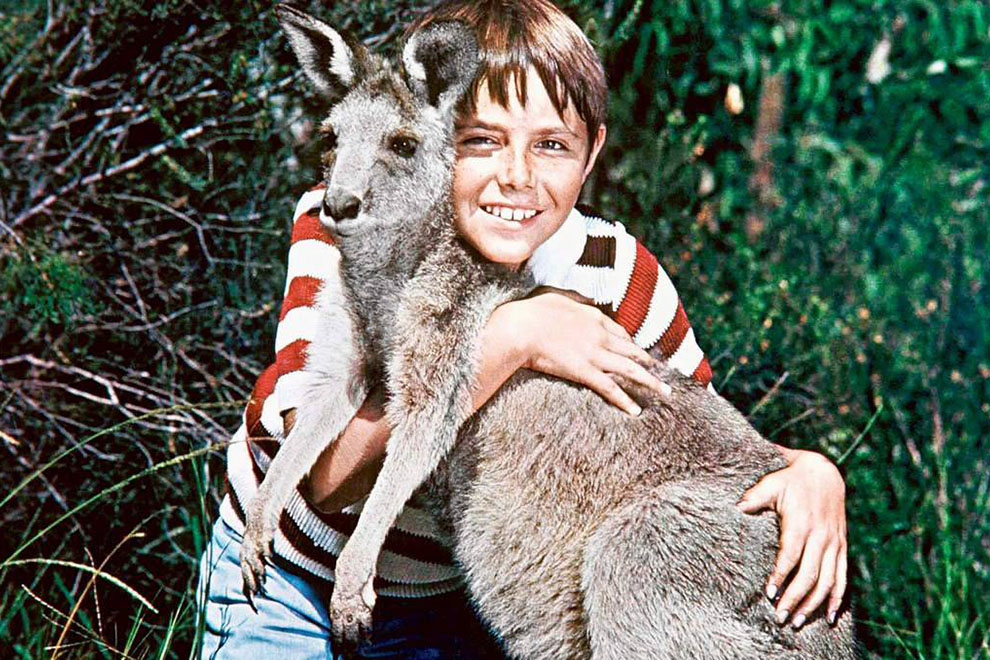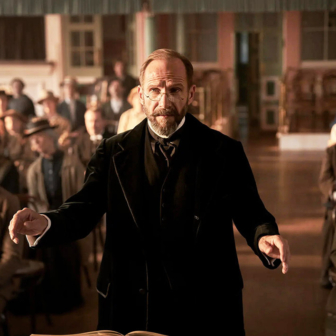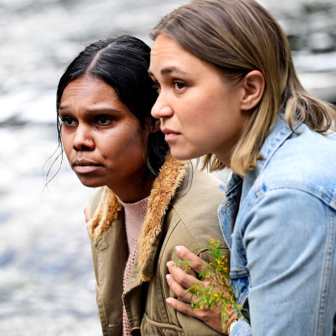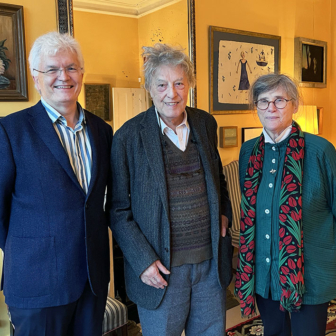Forty-odd years after it was first screened, the children’s TV series Skippy reappeared in the early hours of the morning on the Nine network’s digital channel, Gem 90. Watching ten episodes in rapid succession, I was struck by the skill with which they were packaged. Set in the ranger’s office in a national park near Sydney, each begins with the cast introduced in close-ups (Ed Devereaux as ranger Matt Hammond, Ken James as older son Mark, Garry Pankhurst as the younger, Sonny, and Tony Bonner as helicopter pilot Jerry King) with the catchy theme song, “Skippy, the Bush Kangaroo,” on the soundtrack. The ranger’s household is completed by Clancy (Liza Goddard), who is pretty enough, you’d think, to stir Mark’s late teenage instincts, though nothing like sex seems to have been hinted at. Nor is there any sense of fraternal conflict between Mark and Sonny, except on the most benign, even facetious level.
A problem is set up in the first few minutes: someone’s Siamese cat has gone missing or a koala’s injuries point to a cruel trapper at work or Mark wants to travel overseas but Matt thinks he’s too young or there’s trouble organising a surprise birthday party for Clancy. Skippy, who responds to all requests and commands with an inane clicking sound, will inevitably suss out the guilty party or the elusive solution. There are some improbable elements, such as young Sonny (aged about ten) being allowed to go loose in Sydney’s Luna Park, even more improbably accompanied by Skippy, but even for those of us well past the age to which the series is addressed there is a kind of fascination in seeing how the plot pieces fall into place.
Nothing is wasted; the central plotlines are clear; the family relationships are exemplary; father Matt is equally at home with simple folk as with Sir Adrian, a politician of some kind; and the villains are either obvious baddies like the animal trapper or comic figures like Mr Nimble, who hides a stolen wallet in Skippy’s pouch. As you would if you felt the cops were after you.
Mr Nimble was played by John Meillon and it is worth remembering that, over the years of its production (1968–70), Skippy provided work for a huge number of Australian actors. Starting with Frank Thring who played Dr Stark, the original villain who tried to kidnap Skippy, the casts read like a Who’s Who of the Australian acting profession, with such names as Edward Hepple, Jeanie Drynan, Tom Oliver, Neva Carr-Glynn, Harold Hopkins, Darlene Johnson, Barry Crocker and dozens of others who must have been grateful to this particular enterprise. In 1969 the series spawned a feature film called The Intruders, subsequently sold to the British Children’s Film Foundation, which cut it to an hour and showed it very popularly at its Saturday matinees.
Skippy didn’t bound in from the bush unbidden. Although her character was the brainchild of a film director named Lee Robinson, she might never have reached the screen without the involvement of one half of Australia’s best-known theatrical couple, the Brisbane-born John McCallum. McCallum’s reputation as a film actor and star of the London stage, his £5000 investment, and his contacts in Britain, where the series was also screened, played a vital part in its success.
Anyone who was going to the theatre in Australia between 1955 and the end of the century would have known a great deal about John McCallum and the other half of this famous couple, Googie Withers, who was born in British India. Both had made notable careers on the English stage and in the heyday of British cinema – after the war, in John’s case, and before, during and after in Googie’s. She had come to the fore in a couple of potent war films, then established herself as a formidable leading lady in a run of late 1940s films. In several of them, including It Always Rains on Sunday, she was joined by John. Whereas Googie’s career was always that of actor, John branched out as producer, director, writer and arts administrator.
In fact John was no stranger to television when he embarked on the hugely popular Skippy. In 1963, he had been chosen to be host–narrator for Sydney’s TCN-9 documentary series about the postwar development of Australia, The Crowded Years, after the producers had read an article by Googie saying why she liked living in Australia. In the first episode, aired on 7 October 1963, he appeared with Googie and the three children. It was mainly concerned with the expansion of the Australian steel, automotive and transport industries, with John discussing the great changes that had taken place since his boyhood, with the focus especially on the period since the mid 1950s. The series seems not to have met with great enthusiasm, but it was perhaps interesting enough to John to set him thinking about the possibilities of television production in Australia.
And so, during the slump in the Australian theatre in the mid 1960s, John set up a company to engage in television and movie production. With his lawyer friend Bob Austin and director Lee Robinson, he established Fauna Productions in association with the Nine television network. The series they planned was to be set in Waratah National Park, so that there was always going to be the lure of mountain scenery.
When they were interviewed on ABC TV’s Talking Heads program forty years later, in 2007, Googie recalled the genesis of the series when they were holidaying in Pittwater in 1966:
Googie: We were sitting there with this wonderful view, with all our luggage packed to go back [to Melbourne]. And John said to me, “What would you say if we stayed on for a bit, because I’ve got an idea for a series.” And I said, “What is it?” He said, “You see, nobody’s got a kangaroo except Australia...”
John: Lee Robinson came up with the idea of a boy and a kangaroo. It was really his idea. And we worked on that. I wanted to call it “Hoppy.” He said, No, “Skippy” had a better ring to it for the children. And so three or four of us put in $5000, we made a pilot, took it around the world, sold it to quite a few countries, including England.
John credited Lee Robinson, who produced seventy-five episodes, with the amazing success of the series. Robinson was the line producer, responsible for the day-to-day working of the production. John and Bob Austin had “executive producer” credits, and as far as John was concerned that meant being “in the office every day looking at next week’s scripts, for the month ahead, casting, helping with casting, talking to him [Robinson] and going back about casting.”
There were finally ninety-one episodes of Skippy, seen in colour and black-and-white by an estimated three million people round the world and offering unexceptionable images of Australia. “Think of the propaganda, the awareness of Australia that that will generate. It’s incalculable,” John was quoted as saying at the time. Certainly, a generation of Australian children were brought up on its wholesome stories and were possibly at least as well served as their counterparts today with computer games.
John was awarded CBE (Commander of the Order of the British Empire) in 1971 for his services to the performing arts, and, while his work with the J.C. Williamson theatre company was obviously a major element in this, it would be wrong to underestimate the importance of Skippy’s contribution to performers and other artists in Australian media arts. When John was subjected to the Australian version of This Is Your Life in April 1976, it was only fitting that among the celebrities from the performing arts “Skippy” should have been present.
The inverted commas around her name derive from the fact (kept of course from besotted children at the time) that there were more than one marsupial called into play over the four years of production, and various sets of paws used to represent, say, piano-playing. As John recalled several decades later: “They’re very hard to train – far harder than a dog. No brains at all. Very sweet animals, but very, very difficult, and temperamental too... I’m afraid it’s a bit of a giveaway, but we ended up with thirty-five Skippys! One was a good runner, one was a good jumper, one could get in and out of a car. That took six months of training to do that. And... so we used different ones.”
There were other ventures going on in the McCallum household in the later 1960s, too. Googie returned to the West End stage, their elder daughter Joanna was aspiring towards an acting career, and John and Googie acted together again after eight years. John, of course, hadn’t acted at all since Lesley Storm’s popular comedy Roar Like a Dove finished in 1959.
The couple’s stage reunion, in Sydney on 20 March 1968, came in Relatively Speaking, Alan Ayckbourn’s comedy of modern sexual mores and manners, and copious misunderstandings. The Phillip Theatre production won glowing reviews for the starring couple, with stress on how their styles seemed to complement each other. The Sydney Morning Herald’s H.G. Kippax found it “an absolute joy,” praising Googie for “carrying her massive technical armoury as lightly as thistledown” and John “who matches her relaxation with comic acting in the same difficult convention.” Another reviewer, Norman Kessell, similarly found “joyous fun in errors” and praised “the practised poise and elegance of Googie Withers and John McCallum,” noting that John also produced the season.
Relatively Speaking was the first major success for the about-to-be prolific Ayckbourn, and it was an ideally calculated vehicle for bringing John and Googie back together on stage. This was the kind of witty, tightly constructed comedy they’d made such a hit with in Simon and Laura thirteen years earlier. Although it may look as if actors are having to work harder on more serious, even near-tragic material such as The Deep Blue Sea, the McCallums understood the discipline of comedy and the demands this makes on the actors. They did it well enough for the production to go on to a twelve-week season in Melbourne’s Princess Theatre and thence to Australia’s oldest theatre, Hobart’s Theatre Royal.
With three series of Skippy under his belt, John soon decided to make his own venture into film direction. The result was Nickel Queen (1971), on which he was also producer and co-screenwriter. Set in Western Australia at the time of the Poseidon-led mining boom, the film got off to a roaring start in Perth. Skippy had spawned a feature film, The Intruders, in 1969, for Fauna Productions, but it was directed by Lee Robinson, with John as executive producer. With Nickel Queen, he was making his directorial debut, and it was a real family affair, with Googie starring and Joanna in her first film, playing appropriately enough Googie’s daughter.
Joanna has vivid recollections of the shoot around Kalgoorlie, which was blisteringly hot throughout, and of the brothel “just up from the Police Station [which] sported a row of red plate-glass windows where the ‘girls’ sat and polished their nails next to neat respectable little bungalows, while they waited for trade.” She also remembered how the cast and crew came to favour a certain basic diner, and when the owners saw that their eatery was being patronised by movie people, “candles were put on tables, which were now covered in red-and-white check tablecloths, and the menu was redesigned with French flourishes... At the reopening, the locals were dismayed, until their usual waitress entered through the swing door, and shouted, ‘Hands up for soup!’”
In what was certainly at some remove from her filming past at Ealing Studios in Britain, Googie embarked on another (at least her third) barmaid role, and no doubt her experiences in Pink String and Sealing Wax and It Always Rains on Sunday fed into her playing of the widowed Meg Blake, who runs an outback pub in a ghost town about 400 miles from Perth, somewhere in the Kalgoorlie area. Meg acts on rumours of a nickel strike on nearby Spinifex Hill, stakes her claim, falls willing victim to the shyster American boss of Benson Mining Corporation who buys her shares, and then makes publicity out of her wealth. She wins social status as the Nickel Queen in Perth, where she spends wildly and is taken up by pushy socialites. After she’s lost everything and Benson has been exposed as a fraud, she naturally realises it’s loyal Harry (Ed Devereaux) she really fancies and heads back to a knees-up at her Mirribilli pub.
There’s another plot strand involving some hippies who set up camp in Mirribilli’s derelict railway station and whose shifty guru, Claude (John Laws), also has a go at taking Meg for a ride when he shaves off his beard, dons black tie and fetches up in Perth. And Joanna, as daughter Jenny, expelled from university for her part in student protests, also tracks her mother down in Perth. Oh, there’s a lot going on in Nickel Queen and it’s all quite entertaining in its predictable way. Of course the good-hearted Meg isn’t going to be allowed to throw in her lot with a bunch of superficial and greedy social types, not when there’s honest, rugged Harry carrying a torch for her – and daughter Jenny urging him on with “Why aren’t you with her when she needs you?” The screenplay, the work of journalist Henry C. James, who wrote the original story, with input from John and Joy Cavill, makes for some lively comedy and endorses unexceptionable values.
No one is going to make great critical claims for Nickel Queen,though it doesn’t deserve the sniping verdict of one British reviewer, who dismissed it as “this antediluvian comedy of manners which hammers home its clichés with merciless bonhomie.” If this writer had turned up in Perth at the time of the film’s record-breaking run there, he could easily have been lynched, for Western Australia had taken the first feature film set there to its heart. It says much for John’s skills as a negotiator that, of the film’s $500,000 budget, $350,000 was raised in Western Australia (the rest came from Fauna Productions), and that he was able to recruit its premier, David Brand, and two of his ministers, Charles Court and Arthur Griffith, as well as celebrated talk-show host Laws, to appear in one of the film’s scenes. In an interview at the time, Lee Robinson described John McCallum as “a real wizard, the greatest front man of all time. The sort of bloke who can get in to see a king. He’s got that little extra bit of class that opens all doors. Never gets a knock-back.”
In support of this view of John’s tact and persuasive powers, front-page coverage described how he had given instructions to these political figures, and a roguish suggestion was made that “Government ‘stars’ may have to join a union” to play their parts. Griffith, as mines minister, was especially appropriate. As well, hundreds of locals were cast in bit roles or as extras, and the publicity generated was enormous – and, from a box-office point of view, invaluable.
One article in a WA paper gave an entertaining account of how the extras worked all through the night on a scene set in the Parmelia Hotel’s garden restaurant: “They knew they had to be present all through the night – from 6 pm till 6 am – to ensure continuity for the scene. Yet they ranged from exhilarated young people about twenty to several septuagenarians.” Headlines such as “Glittering World Premiere for the Nickel Queen” were typical. This same paper devoted an entire page to the film, its premiere with its “high-fashion guests,” and an enthusiastic review. Another report told how “More than 900 guests basked in the first-night lights. Guests of honour were the Governor of Western Australia, Major-General Sir Douglas Kendrew and Lady Kendrew.”
The film was an immense commercial hit in Western Australia, where people fell upon it with all the pleasure of recognition, but it was not such a critical or a box-office success in the other states or internationally. Nevertheless, it has its place firmly enough at the start of the Australian filmmaking revival of the 1970s. Googie was unable to be present at the promotional events in Australia because she was looking after Joanna who was in England where she was making her West End debut, but both women were present, reported the Swanage Times, when “in a fantastic ‘scoop’ the League of Friends of the Swanage Hospital have got the first public screening of a new Australian film starring Swanage actress Googie Withers.”
Googie had of course been brought up in Swanage, where her late father, Captain Edgar Withers, lived in Ballard Estate, and her brother Harry Withers and his second wife Judy now lived at Court Pound, Langton Matravers. Nickel Queen may not have been quite the Northern Hemisphere breakthrough that John would have hoped for, but there’s a nicely cyclical touch about the idea of the hometown girl coming back trailing clouds of film fame. •
This is an edited extract from Double Act: The Remarkable Lives and Careers of Googie Withers and John McCallum, by Brian McFarlane (Monash University Publishing).




